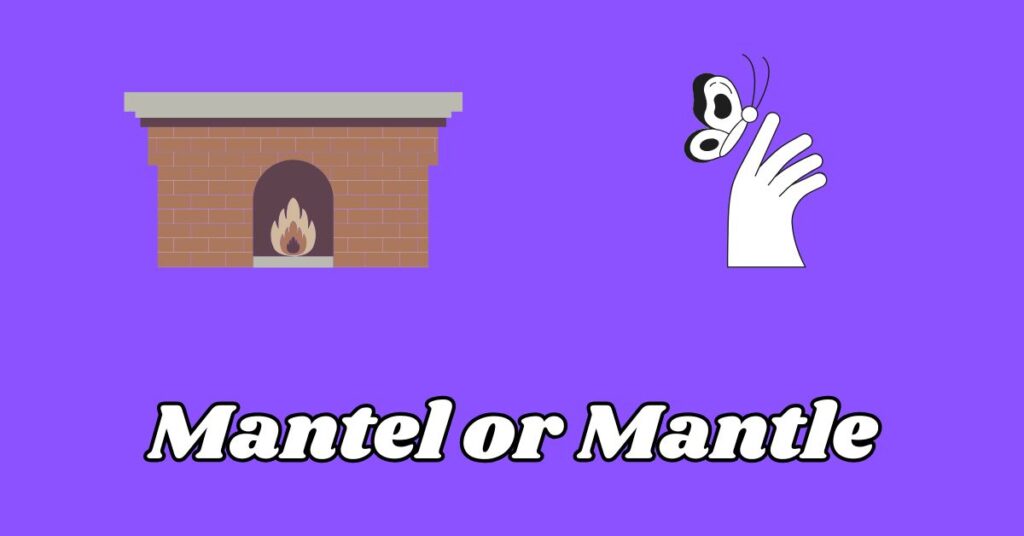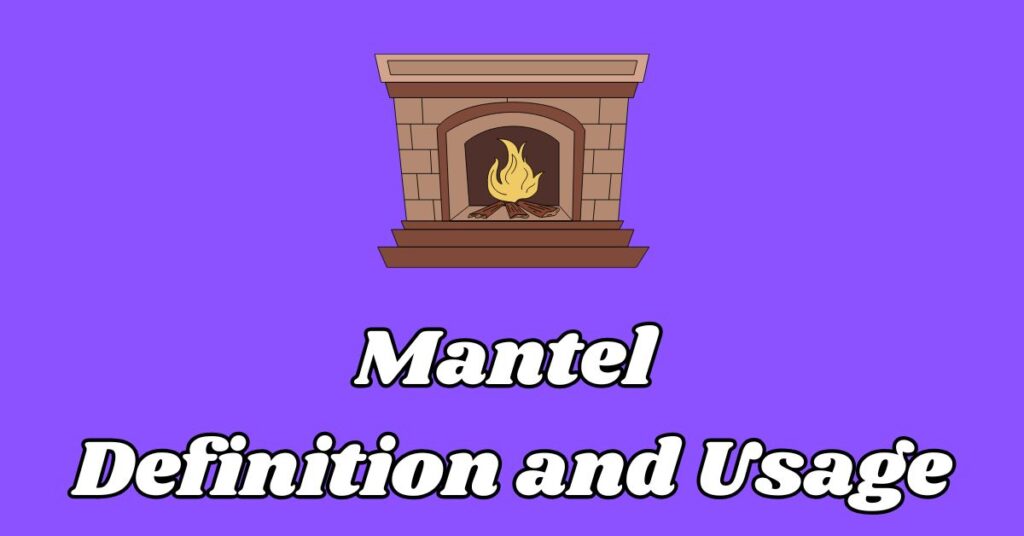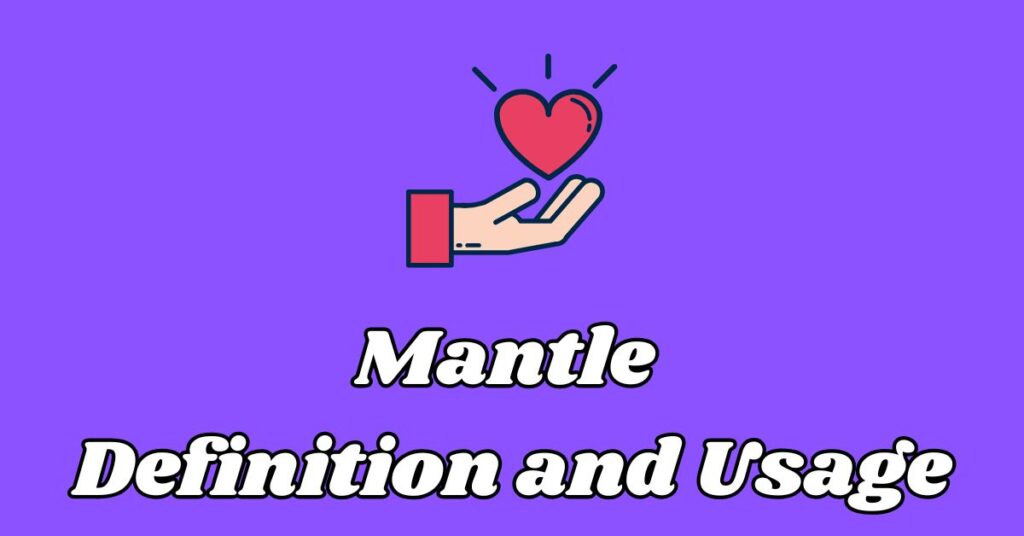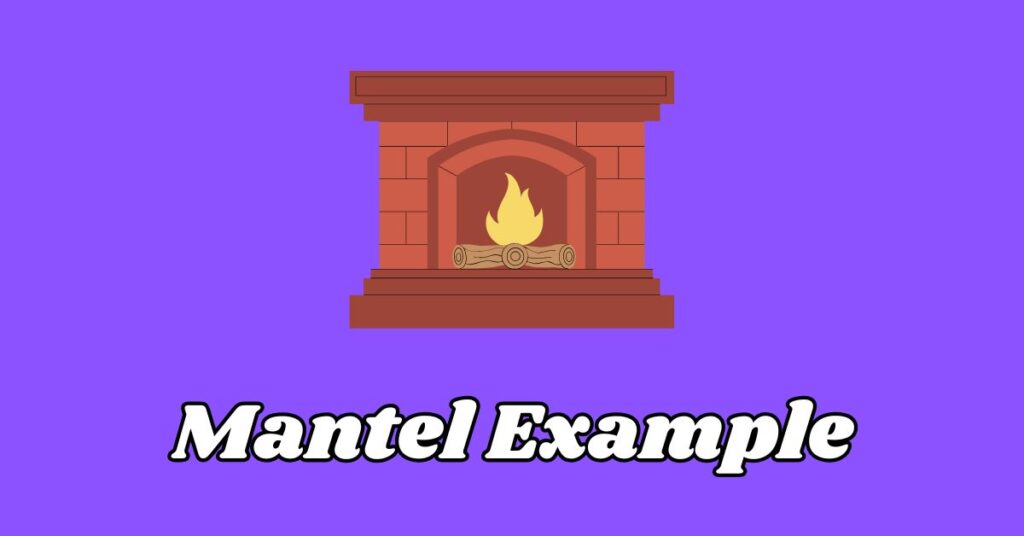Mantel vs Mantle are two words that sound identical but carry distinct meanings rooted in language and context. While mantel refers to the shelf above a fireplace used for decorative purposes, mantle describes a loose cloak or the Earth’s layer beneath the crust.
Confusion arises because they sound similar, but their roles in text generation, speech, and translation hinge on context clues. For example, a mantel might display holiday decorations, while a mantle could symbolize leadership or geology.
Mastering this difference ensures clarity in writing and communication, avoiding errors in text classification or question answering. By understanding their origins and usage, you’ll navigate language with precision.
Quick Summary
Mantel and mantle are homophones with distinct meanings. Mantel refers to the shelf above a fireplace used for decorative purposes, while mantle describes a loose cloak or the Earth’s layer beneath the crust. Confusion arises because they sound similar, but their uses are context-dependent.
Difference Between Mantel or Mantle

The core distinction lies in their parts of speech and usage:
- Mantel is a noun tied to architectural contexts, like a shelf above a fireplace for displaying ornaments.
- Mantle serves as both a noun (e.g., a cloak) and a verb (e.g., to surround or assume responsibility). Geologically, it denotes the Earth’s mantle, a region beneath the crust.
Pronunciation is identical (/ˈman.təl/), but spelling and context clarify their roles. For example, a mantel might hold holiday decorations, while a mantle could describe a shawl or the Earth’s interior.
Origins of the Word Mantel
The word mantel originated around 1200, initially referring to a short, loose, sleeveless cloak. By the 1510s, its meaning shifted to describe timber or stone supporting masonry above a fireplace, derived from Middle English mantiltre or “mantle-tree.”
This term referred to a beam of oak or hardwood used in fireplaces or ovens. Over time, the meaning of “mantle” in this context became unclear. By 1824, the term “mantel-clock” emerged, describing clocks designed to sit on a mantel-shelf.
Historically, the mantel served functional and decorative purposes, evolving into a central feature in homes for displaying ornaments and creating architectural focus.
Origins of the Word Mantle
The word “mantle” originates from Old English “mentel,” describing a loose, sleeveless outer garment. It stems from the Latin “mantellum,” meaning “cloak,” possibly with Celtic roots. The term was reinforced by Old French “mantel” in the 12th century.
By 1300, it gained a figurative sense of concealment. The mantle symbolized literary authority by 1789, inspired by Elijah’s mantle. In geology, it denoted Earth’s layer between crust and core by 1940. Historically, widows used mantles in vows of chastity before bishops.
Mantel: Definition and Usage
A mantel is a shelf above a fireplace, often crafted from materials like wood, stone, or marble. It serves both functional and decorative purposes, acting as a frame for the fireplace and a space to display ornaments, photographs, or seasonal decorations.

Historically, the term evolved from Middle English mantiltre, referring to a beam above a fireplace used for drying clothes. Today, the mantel is a centerpiece in interior design, adding charm and character to homes.
Mantel Definition
A mantel is the shelf above a fireplace, often made of stone, wood, or marble. It frames the opening of the fireplace and serves both decorative and functional purposes. Historically, the term evolved from Middle English mantiltre, referring to a beam above fireplaces used for drying clothes.
Today, it is a focal point in interior design, commonly used to display ornaments, family photos, or seasonal decorations like holiday stockings.
Mantel Pronunciation
The word mantel is pronounced as /ˈmæn.təl/ in American English. The pronunciation breaks down into simple sounds: /m/ as in “moon,” /æ/ as in “hat,” /n/ as in “name,” /t/ as in “town,” and /əl/ as in “label.” Despite its identical pronunciation to “mantle,” its meaning and usage differ significantly.
Mantel Usage
In modern usage, the mantel is synonymous with elegance and tradition, frequently seen in homes as a focal point for holiday decorations or family heirlooms. Its architectural significance lies in framing the fireplace and enhancing the room’s aesthetic appeal.
For example, homeowners often decorate their mantels with garlands during Christmas or candles for a cozy ambiance. The word is particularly common in text classification related to interior design discussions, where it highlights features of a room that combine functionality and beauty.
Uses of Mantel in a Sentence
- The mantel held framed family photos and a vintage clock.
- During Christmas, the mantel was draped with garlands and stockings.
- The rustic mantel complemented the stone fireplace in the cabin.
- She dusted the mantel before placing new vases.
- The mantel became a focal point in the living room’s design.
Synonyms of Mantel
- Shelf
- Ledge
- Mantelpiece
- Hearth
- Chimneypiece
- Overmantel
- Surround
- Architrave
- Brackets
- Cornice
Mantle: Definition and Usage
A mantle is a versatile term with multiple meanings, primarily referring to a loose, sleeveless cloak worn historically as outerwear. Its origins trace back to Old English and Latin, where it symbolized protection or authority.

Over time, the word evolved to describe anything that covers or envelops, such as a mantle of snow on the ground or secrecy concealing information. In geology, it refers to the Earth’s mantle, the layer between the crust and core.
Mantle Definition
The word mantle has a broad range of meanings, both literal and figurative. It originally referred to a loose, sleeveless cloak worn in historical contexts for warmth or as a symbol of authority. Figuratively, it represents something that covers or conceals, such as “a mantle of darkness.”
In geology, the mantle is the layer of the Earth located between the crust and the core, comprising hot, semi-solid rock that drives tectonic activity.
Mantle Pronunciation
The pronunciation of mantle is /ˈmæn.təl/. It is phonetically similar to “mantel,” which often leads to confusion. The sound begins with “man” as in “manual” and ends with “təl,” where the “t” is crisp and the “əl” is soft.
Despite its identical pronunciation with “mantel,” the meanings of these words are distinct and context-dependent.
Mantle Usage
The word mantle is widely used in both literal and figurative contexts. For instance, it can describe a cloak-like garment, a layer of Earth’s interior, or even a symbolic role, such as assuming the mantle of leadership.
In literature, it often represents something that conceals or protects, like Cervantes’ description of sleep as “the mantle that covers all human thoughts.” Whether in clothing, geology, or metaphorical speech, the term remains rich in meaning and application.
Uses of Mantle in a Sentence
- The knight wore a mantle embroidered with his family crest.
- Scientists study the mantle to understand Earth’s internal heat.
- She mantled her shoulders with a woolen shawl.
- The mantle of responsibility weighed heavily on the new CEO.
- Fossils in the mantle reveal Earth’s ancient history.
Synonyms of Mantle
- Cloak
- Shawl
- Cape
- Layer
- Covering
- Garment
- Robe
- Wrap
- Fold
- Envelope
Side-by-Side Comparison
| Feature | Mantel | Mantle |
| Definition | Shelf above a fireplace | Cloak or Earth’s layer |
| Pronunciation | /ˈman.təl/ | /ˈman.təl/ |
| Usage | Decorative/architectural | Clothing, geology, or symbolic |
| Example | “Decorate the mantel for Halloween.” | “The mantle of the Earth is hot.” |
Everyday Usage Examples
Mantel and mantle appear in daily contexts with distinct roles. For mantel, consider a homeowner arranging holiday decorations on the fireplace shelf or a designer discussing architectural features in a living room.
For mantle, examples include a historical drama depicting a knight wearing a cloak or a geology textbook explaining the Earth’s mantle. These words also surface in metaphors, such as “taking the mantle of responsibility” or “a mantel of snow” covering a landscape.
Their usage hinges on context clues, like fireplaces for mantel or clothing/geology for mantle.
Mantel Example
A mantel is often the centerpiece of a room, particularly in homes with fireplaces. For example, a wooden fireplace mantel in a cozy den might feature family photos, candles, or seasonal decorations like garlands at Christmas.

In a more formal setting, a marble mantel could act as a luxurious frame for an elegant fireplace, showcasing vases or artwork. Whether simple or ornate, the mantel enhances the room’s aesthetic and provides a functional space for display.
Examples of Mantel in Context
- “The mantel was adorned with candles and evergreen branches.”
- “She polished the mantel before the family gathering.”
- “The mantel in the cabin featured rustic wooden carvings.”
- “The mantel became a focal point for the room’s design.”
- “She dusted the mantel weekly to keep it dust-free.”
Mantle Example
The word mantle finds its use in diverse contexts. For instance, in geology, the Earth’s mantle lies beneath the crust and surrounds the core, playing a vital role in tectonic activity. Historically, a mantle referred to as a loose cloak, often worn as a symbol of status or authority.
Figuratively, phrases like “taking on the mantle of leadership” highlight its symbolic meaning of assuming responsibility or power, making it rich in metaphorical and literal applications.
Examples of Mantle in Context
- “The mantle of the Earth is divided into the upper and lower mantle.”
- “He wore a mantle to protect himself from the rain.”
- “The mantle of responsibility felt overwhelming.”
- “The mantle of the volcano erupted violently.”
- “She mantled her shoulders with a silk shawl.”
Common Mistakes
Confusion often stems from similar sounds and overlapping contexts. For example, mixing “mantel” with “mantle” in sentences like:
❌ “The mantle held family photos.” (Incorrect; use mantel.)
✅ “The mantel held family photos.”
Tips to Avoid the Mistakes
- Associate “mantel” with fireplaces. If the word relates to decorative shelves, use “mantel.”
- Link “mantle” to broader meanings like clothing or geology.
- Use visual cues: A mantel is a shelf; a mantle is a cloak or layer.
- Practice with sentences to reinforce understanding.
- Double-check spelling in formal writing.
Tips to Remember the Differences
- MantEL = shELf: Think of the “EL” in “mantel” matching the “shelf” above a fireplace.
- MantLE = cLoak: The “LE” in “mantle” aligns with “cloak” or “layer.”
- Mnemonics: Pair “mantel” with fireplace and “mantle” with Earth’s interior.
- Context clues: If the sentence mentions decorations, use “mantel.” If it references clothing or geology, use “mantle.”
- Keep a reference guide handy for quick checks.
More Article: Midle vs Middle: Which is the Correct Spelling?
FAQs
Is it Mantel vs Mantle?
Yes, mantel refers to a fireplace shelf, while mantle describes a cloak or the Earth’s layer.
Is Mantel and Mantle grammatically correct?
Both are correct but context-dependent: mantel for fireplaces, mantle for clothing/geology.
What is the meaning of Mantel and Mantle?
Mantel: A shelf above a fireplace. Mantle: A cloak or the Earth’s layer beneath the crust.
How do you spell mantel in the UK?
In the UK, it’s spelled mantelpiece (e.g., “The mantelpiece held family photos”).
Conclusion
Mantel vs Mantle are two words that sound similar but carry distinct meanings. Mantel refers to the shelf above a fireplace, a staple in interior design for displaying ornaments. Mantle, meanwhile, spans clothing, geology, and symbolic roles, from a cloak to the Earth’s layer beneath the crust.
Mastering their differences ensures clarity in writing, speech, and text generation, avoiding confusion in language or translation. By focusing on context clues like fireplaces for mantel or geology for mantle you’ll use these words with precision. Practice these tips, and you’ll never mix them up again.
Related Post: Fine vs Find: What’s the Difference?

